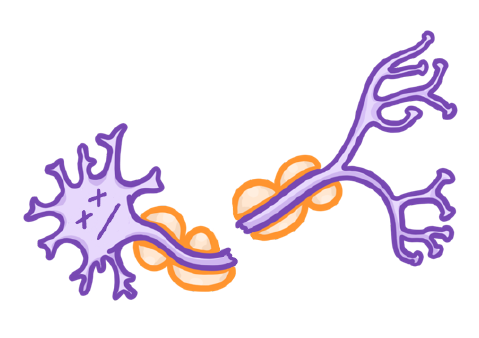Stem Cells in Medicine
This lesson covers:
- How stem cells can be used to treat diseases like diabetes and paralysis
- The risks involved in stem cell therapy
- Why some people think we shouldn't use stem cells in this way
Which type of stem cell can only differentiate into different types of blood cells?
Adult stem cells
Embryonic stem cells
|
What is the problem in type 1 diabetes?
The pancreas is damaged and no longer produces insulin
The red blood cells are misshapen and don't function properly
The heart is damaged and can't contract properly
|

When nerve cells are damaged, messages can no longer be sent to the muscles properly. This can lead to the loss of the ability to move some or all of your body.
What do we call this condition?
Ischemia
Paralysis
Sickle cell anaemia
|
Steps of stem cell treatment
replace / differentiate / embryonic / laboratory / specialised
- Extract stem cells from early embryos.
- Grow them in a .
- Stimulate them to into whichever type of cell that we want.
- Give them to the patient to their faulty cells.
|
Give two drawbacks of using embryonic stems cells in stem cell therapy.
|
Which two of the options below are advantages of using adult stem cells rather than embryonic stem cells?
Adult stem cells are taken from the patient so are not in limited supply
Adult stem cells won't cause rejection as they're taken from the patient themselves
Adult stem cells can only differentiate into a few cell types
Adult stem cells have to be extracted from the bone marrow which is very painful
|
Two risks of using stem cells in medicine
- The stem cells could be infected with a v whilst in the laboratory, which could then infect the patient.
- As stem cells divide quickly, there is a chance they could divide uncontrollably once they've been transplanted, and then develop into a t.
|
Is stem cell research in the UK legal or illegal?
Legal
Illegal
|